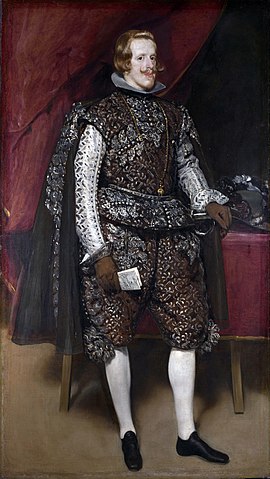Introduction to Spanish Painting

When the Holy Roman Emperor Charles V abdicated in 1556, he left Spain and its American colonies, the Netherlands, Burgundy, Milan, and the Kingdom of Naples and Sicily to his son Philip II and the Holy Roman Empire (Germany and Austria) to his brother Ferdinand. Ferdinand and the Habsburg emperors who succeeded him ruled their territories from Vienna in Austria, but much of German-speaking Europe remained divided into small units in which local rulers decided on the religion of their territory. Catholicism prevailed in southern and western Germany and in Austria, while the north was Lutheran.
The Spanish Habsburg kings Philip III (r 1598-1621) Philip IV (r. 1621-1665), and Charles II (r. 1665-1700) reigned over a weakening empire. After repeated local rebellions, Portugal re-established its independence in 1640. The Kingdom of Naples remained in a constant state of unrest. After 80 years of war, the Protestant northern Netherlands – which had formed the United Provinces – gained independence in 1648. Amsterdam grew into one of the wealthiest cities in Europe, and the Dutch Republic became an increasingly serious threat to Spanish trade and colonial possessions. The Catholic southern Netherlands (Flanders) remained under Spanish and then Austrian Habsburg rule.

What had seemed an endless flow of gold and silver from the Americas to Spain diminished, as precious-metal production in Bolivia and Mexico lessened. Agriculture, industry, and trade at home also suffered. As they tried to defend the Roman Catholic Church and their empire on all fronts, the Spanish kings squandered their resources and finally went bankrupt in 1692. Nevertheless, despite the decline of the Habsburgs’ Spanish empire, seventeenth-century writers and artists produced some of the greatest Spanish literature and art, and the century is often called the Spanish Golden Age.[1]
- Marilyn Stokstad, Art History, vol. 2, 4th ed, (Upper Saddle River, NJ: Prentice Hall: 2011), 729 ↵

